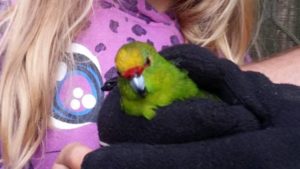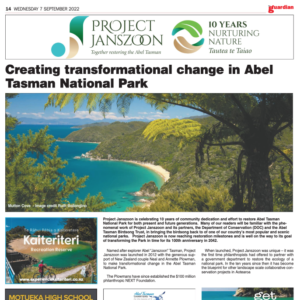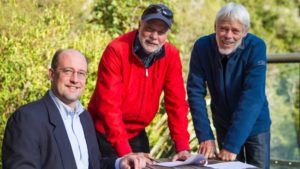When Bradley Shields came across a small set of prints in a swamp within the Abel Tasman National Park, he suspected they could have been left by the small, elusive spotless crake.
But, getting photographic proof of the secretive bird’s existence has been almost a year in the making.
The Golden Bay 17-year-old and keen wildlife photographer helped to organise an “ecoblitz” last September, surveying birds, invertebrates and freshwater plants at Hadfield Clearing, near the Awaroa Inlet in his role as an Abel Tasman Youth Ambassador.
It was on the outskirts of the swamp that Shields came across a set of tracks, each about 2.5 centimetres wide with three toes. He thought the tracks resembled those of either a young weka or a crake. There are two crake species in New Zealand – the spotless crake, which is more common in the North Island and the marsh crake, which is more common in the South Island.
While spotless crake have been seen in the national park, it was not known if a population existed near Hadfield Clearing.
The spotless crake, a small dark coloured rail, is about half the size of a common blackbird and is very secretive so it is not often seen. They are considered at risk, with their population declining dramatically since humans began draining wetlands.
“Considering the habitat we found while doing those surveys, it would really surprise me if there weren’t any crake there because of how amazing that swamp is,” Shields said.
Last December, Shields spent 10 days working alongside the Department of Conservation to research wetland birds at Lake Ellesmere in Canterbury, tracking birds with radio transmitters to monitor their natural movements.
“While I was down there we managed to catch a marsh crake and put a radio tracker on it and that really made me want to pursue the idea of finding another population in the Abel Tasman.”
Coronavirus meant those plans were put on hold until at the end of July, when trail cameras were placed in the clearing.
Shields said the footage showed the area was a “weka super highway” with lots of wood hens passing through the area, as well as fernbirds, pukeko, pāteke and on several occasions – the spotless crake.
Last weekend, he returned to a different part of the swamp and heard a spotless crake call, then he saw it poke its head out from the bushes and he was able to get a photo of it.
“It was very cool to see it finally.”
Shields is keen to establish whether the crake are breeding which will require monitoring by using trail cameras, doing surveys and recording audio to listen for calls.
Shields’ interest in birdwatching and photography began several years ago during a family holiday in Australia while photographing birds with the family camera.
When he returned home to Tākaka, he took an interest in the native birdlife. He has since travelled around the South Island looking for certain birds, such as the endangered alpine rock wren.
For the last four years, Shields has produced a calendar showcasing his photographs of different native birds.
Project Janszoon director Bruce Vander Lee said it was satisfying to see students taking an interest in what was going on in the park, investigating and getting results.
“Bradley developed skills around monitoring crake and recognised the signs before we did. He chose to pursue that and it is satisfying for us because protecting things in place is always easier than restoring them.
“To know the birds are there is a huge step forward in our knowledge, and we really congratulate Bradley for finding that out.”



